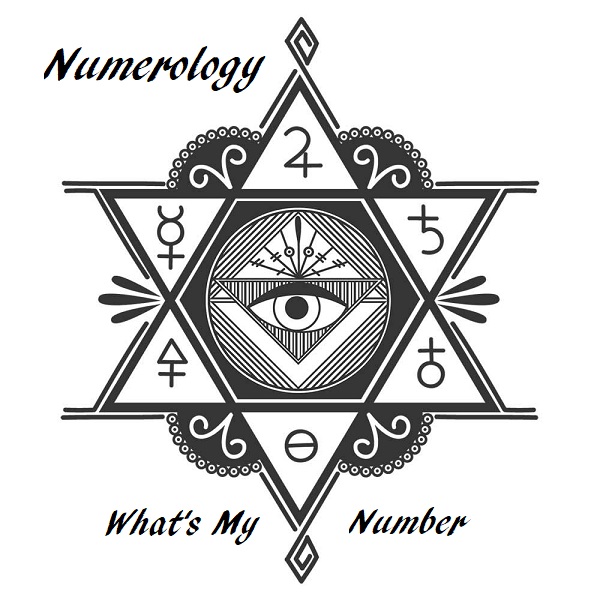Unlocking Your Energy Flow: A Guide to Balancing Chakras with Your Pendulum
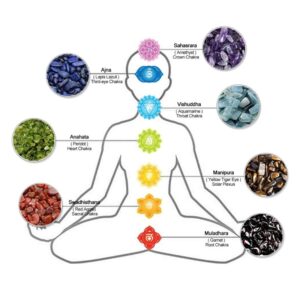
Are you feeling drained, stressed, or out of balance? The ancient practice of chakra balancing might be the solution you’ve been searching for. In this comprehensive guide, we will explore how you can unlock and heal your energy flow using a simple tool: your pendulum. Chakras are the energy centres in our bodies, and when they are in harmony, we experience vitality and well-being. However, stress, negative emotions, and physical ailments can disrupt this delicate balance. By using a pendulum, we can tap into our own intuition and receive guidance on how to restore the flow of energy in our chakras.
This guide will walk you through the basics of chakra balancing and how to choose the right pendulum. You will learn step-by-step techniques for using your pendulum to clear, align, and balance each chakra. With regular practice, you can awaken your body’s natural ability to heal itself, improve your overall well-being, and find inner peace. Get ready to embark on a transformative journey as we unlock your energy flow and bring harmony to your mind, body, and spirit. Let your pendulum guide you towards a life filled with vitality and balance.
Understanding the Role of Pendulums in Chakra Balancing
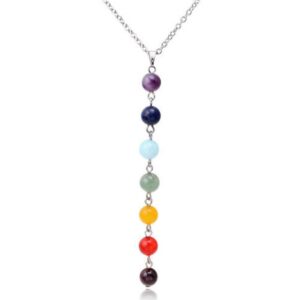
Pendulums are simple tools that can be used for various purposes, such as divination, dowsing, and healing. One of the applications of pendulums is chakra balancing, which is a form of energy healing that aims to harmonize the flow of life force in the body. Chakras are energy centres that correspond to different aspects of our physical, mental, emotional, and spiritual well-being. There are seven main chakras that run along the spine, from the base to the crown of the head. Each chakra has a specific colour, element, sound, and function.
Pendulums can help us to assess the state of our chakras and to restore their balance. By holding a pendulum over each chakra, we can observe its movement and determine whether the chakra is open, closed, or blocked. A healthy chakra will spin in a clockwise direction, while an unhealthy chakra will spin in a counter-clockwise direction or not at all. Pendulums can also be used to clear and energize the chakras by swinging them in the desired direction over each chakra.
There are different types of pendulums that can be used for chakra balancing, such as crystal, metal, wood, or stone pendulums. Each material has its own properties and vibrations that can affect the chakras in different ways. For example, crystal pendulums are popular because they can amplify and transmit energy, while metal pendulums are more stable and grounded. Some pendulums are also designed with specific colours or symbols that correspond to the chakras.
Chakra balancing with pendulums is a simple and effective way to enhance our well-being and connect with our inner wisdom. By using pendulums regularly, we can maintain a healthy flow of energy in our body and mind, and achieve greater harmony and balance in our life.
The Seven Chakras and their Corresponding Energy Centres
The seven chakras are the main energy centres of the body. They are located along the spine, from the base to the crown of the head. Each chakra corresponds to a different aspect of our physical, mental, emotional and spiritual well-being. When the chakras are balanced and aligned, we experience harmony and health. When the chakras are blocked or imbalanced, we may face various challenges and issues in our lives.
The seven chakras and their corresponding energy centres are:
- Root chakra: Located at the base of the spine, this chakra is associated with survival, security, stability and grounding. It connects us to the earth and our physical body. When this chakra is balanced, we feel safe, supported and confident. When this chakra is imbalanced, we may feel fearful, anxious, insecure or disconnected.
- Sacral chakra: Located below the navel, this chakra is associated with creativity, sexuality, emotions and pleasure. It connects us to our feelings and desires. When this chakra is balanced, we feel joyful, passionate, creative and sensual. When this chakra is imbalanced, we may feel guilty, ashamed, repressed or frustrated.
- Solar plexus chakra: Located above the navel, this chakra is associated with power, will, identity and self-esteem. It connects us to our personal strength and purpose. When this chakra is balanced, we feel confident, assertive, motivated and empowered. When this chakra is imbalanced, we may feel angry, aggressive, insecure or powerless.
- Heart chakra: Located at the centre of the chest, this chakra is associated with love, compassion, empathy and healing. It connects us to our relationships and our sense of belonging. When this chakra is balanced, we feel loving, compassionate, forgiving and generous. When this chakra is imbalanced, we may feel lonely, isolated, bitter or resentful.
- Throat chakra: Located at the base of the throat, this chakra is associated with communication, expression and truth. It connects us to our voice and our authenticity. When this chakra is balanced, we feel honest, clear, expressive and respectful. When this chakra is imbalanced, we may feel silenced, dishonest, timid or rude.
- Third eye chakra: Located between the eyebrows, this chakra is associated with intuition, insight and wisdom. It connects us to our inner vision and our higher self. When this chakra is balanced, we feel intuitive, insightful, imaginative and aware. When this chakra is imbalanced, we may feel confused, deluded, distracted or closed-minded.
- Crown chakra: Located at the top of the head, this chakra is associated with spirituality, consciousness and enlightenment. It connects us to the divine and the universal source of energy. When this chakra is balanced, we feel blissful, peaceful, connected and transcendent. When this chakra is imbalanced, we may feel detached.
How to Choose the Right Pendulum for Chakra Balancing
Pendulums are tools that can help you balance your chakras and enhance your intuition. They are usually made of metal, crystal, wood, or other materials, and they can have different shapes, sizes, and colours. How do you choose the right pendulum for chakra balancing?
Here are some tips to guide you:
- First, you need to decide which chakra you want to work on. There are seven main chakras in the human body, each corresponding to a different aspect of your physical, mental, emotional, and spiritual health. You can use a pendulum to test the energy flow of each chakra and identify any blockages or imbalances.
- Second, you need to find a pendulum that resonates with the chakra you want to balance. Each chakra has a colour and an element associated with it, and you can use these as clues to choose a pendulum that matches the vibration of the chakra. For example, if you want to balance your root chakra, which is related to stability, security, and survival, you can choose a pendulum made of red or black stone, such as hematite, obsidian, or garnet. If you want to balance your heart chakra, which is related to love, compassion, and harmony, you can choose a pendulum made of green or pink stone, such as rose quartz, jade, or malachite.
- Third, you need to trust your intuition and feel the connection with the pendulum. You can hold the pendulum in your hand and see how it feels. Does it feel comfortable, warm, and inviting? Does it feel heavy, cold, or repelling? Does it swing easily and smoothly? Does it give you clear and consistent answers? You can also ask the pendulum if it wants to work with you and see how it responds. If the pendulum feels right for you and agrees to work with you, then you have found your match.
Using your Pendulum to Assess Chakra Imbalances
By using a pendulum, you can assess the state of your chakras, the seven energy centres that regulate your physical, mental, emotional and spiritual well-being.
Here are some steps to follow to use your pendulum to assess chakra imbalances:
- Choose a pendulum that resonates with you. You can use any object that has a string or chain attached to it, such as a necklace, a ring or a crystal. Make sure the pendulum is clean and free of any negative influences. You can cleanse it by holding it under running water, smudging it with sage or placing it on a bed of salt.
- Find a comfortable and quiet place where you can relax and focus. You can sit or lie down, as long as your spine is straight and your body is aligned. Hold the pendulum in your dominant hand and let it hang freely over your palm or lap. Take a few deep breaths and clear your mind of any distractions.
- Set your intention and ask for guidance. You can say something like “I ask for the highest guidance and truth to assess the state of my chakras”. You can also ask for protection from any negative or harmful energies that may interfere with your reading.
- Establish the signals for yes and no. You can do this by asking the pendulum simple questions that you already know the answer to, such as “Is my name …?” or “Am I wearing …?”. Observe how the pendulum moves in response to yes and no answers. It may swing back and forth, side to side, clockwise or counter clockwise. Make a mental note of the signals for yes and no.
- Start with the root chakra, located at the base of your spine. Hold the pendulum over the area where the chakra is located, about an inch or two above your body. Ask the pendulum “Is my root chakra balanced?”. Observe how the pendulum moves and interpret the answer based on the signals you established. If the pendulum moves in the direction of yes, it means your root chakra is balanced. If it moves in the direction of no, it means your root chakra is imbalanced. You can also ask more specific questions, such as “Is my root chakra overactive?” or “Is my root chakra underactive?”.
- Repeat the process for the other six chakras, moving up from the root to the sacral, solar plexus, heart, throat, third eye and crown chakras. Each chakra corresponds to a different aspect of your life, such as security, creativity, power, love, communication, intuition and spirituality. You can learn more about the meaning and function of each chakra online or from books.
- Once you have assessed all seven chakras, thank the pendulum and your guides for their assistance. You can also ask for any advice or guidance on how to balance or heal your chakras. You can use various methods, such as meditation, visualization, affirmations, crystals, aromatherapy or yoga to work on your chakras.
- Cleanse your pendulum after each use by rinsing it under water, smudging it with sage or placing it on salt. Store it in a safe and sacred place until you need it again.
Balancing the Root Chakra with your Pendulum
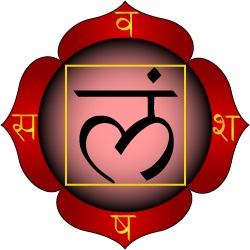
The root chakra, also known as Muladhara, is the first of the seven main energy centres in the body. It is located at the base of the spine and is associated with survival, security, stability, and connection to the earth. When the root chakra is balanced, you feel grounded, confident, and safe. When it is imbalanced, you may experience fear, anxiety, insecurity, and physical problems such as lower back pain, constipation, or fatigue.
One way to balance the root chakra is to use a pendulum, which is a weighted object suspended from a string or chain. A pendulum can act as a tool to access your subconscious mind and your intuition. By asking yes or no questions, you can get guidance from your higher self on how to heal and harmonize your root chakra.
To use a pendulum for balancing the root chakra, you will need a quiet and comfortable space where you can sit or lie down. You will also need a pendulum that resonates with you. You can choose one based on its shape, colour, material, or intuition. Some crystals that are good for the root chakra are red jasper, black tourmaline, hematite, or smoky quartz.
To begin, hold the pendulum in your dominant hand and let it hang freely over your root chakra area. You can also place it on a table or a stand if you prefer. Relax your body and mind and focus on your breathing. Ask the pendulum to show you its movement for yes and no. For example, you can say “Show me yes” and observe how the pendulum swings. It may swing clockwise, counter clockwise, back and forth, or side to side. Repeat the same for no. Once you have established the communication with your pendulum, you can proceed to ask questions about your root chakra.
Some examples of questions you can ask are:
– Is my root chakra balanced?
– Is there anything blocking my root chakra?
– Do I need to release any negative emotions from my root chakra?
– Do I need to forgive anyone or myself for something related to my root chakra?
– Do I need to affirm anything positive for my root chakra?
Depending on the answer you get from your pendulum, you can take appropriate actions to balance your root chakra. For example, if you get a yes for needing to release negative emotions, you can do some journaling, meditation, or emotional freedom technique (EFT) to let go of what is holding you back. If you get a yes for needing to affirm something positive, you can repeat some affirmations such as “I am safe”, “I am grounded”, or “I trust in life”.
Using a pendulum for balancing the root chakra can be a simple and effective way to connect with your inner wisdom and restore your sense of security and stability. You can do this practice as often as you feel guided or whenever you feel out of balance. Remember to thank your pendulum and yourself for the healing session and cleanse your pendulum after each use.
Balancing the Sacral Chakra with your Pendulum
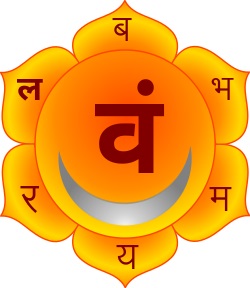
The sacral chakra, also known as the second chakra or Svadhisthana, is located below the navel and above the pubic bone. It is associated with creativity, sexuality, emotions, and relationships. When the sacral chakra is balanced, you feel confident, passionate, joyful, and expressive. When it is imbalanced, you may experience low self-esteem, guilt, shame, anger, or fear.
One way to balance the sacral chakra is to use a pendulum, which is a weighted object that hangs from a string or chain. A pendulum can help you access your intuition and subconscious mind, as well as clear any blockages in your energy field.
To use a pendulum for sacral chakra healing, follow these steps:
- Choose a pendulum that resonates with you. You can use any material, shape, or colour, but some people prefer to use crystals that correspond to the sacral chakra, such as carnelian, orange calcite, or tiger’s eye.
- Cleanse your pendulum before using it. You can do this by holding it under running water, smudging it with sage or incense, or placing it on a bed of salt or in sunlight for a few hours.
- Find a comfortable and quiet place to sit or lie down. Hold your pendulum in your dominant hand and let it hang freely over your sacral chakra area. Relax your body and mind and focus on your breathing.
- Ask your pendulum to show you its signals for yes and no. You can do this by saying out loud or in your mind: “Show me yes” and “Show me no”. Observe how your pendulum moves. It may swing clockwise or counter clockwise, back and forth, or side to side. Remember these signals for future reference.
- Ask your pendulum if your sacral chakra is balanced. You can do this by saying out loud or in your mind: “Is my sacral chakra balanced?” Observe how your pendulum responds. If it moves in the direction of yes, then your sacral chakra is balanced. If it moves in the direction of no, then your sacral chakra is imbalanced and needs healing.
- If your sacral chakra is imbalanced, ask your pendulum what you need to do to balance it. You can do this by saying out loud or in your mind: “What do I need to do to balance my sacral chakra?” Observe how your pendulum moves. It may point to a specific direction, an object, a person, or an activity that can help you heal your sacral chakra. For example, it may point to a book that you need to read, a friend that you need to talk to, or a hobby that you need to pursue.
- Follow the guidance of your pendulum and act accordingly. You can also ask your pendulum for more details or clarification if needed. For example, you can ask: “How often do I need to do this?” or “How long will it take to balance my sacral chakra?” Trust your intuition and listen to your inner voice.
- Repeat this process as often as you feel necessary until your sacral chakra is balanced. You can also use your pendulum to check the status of your other chakras and balance them accordingly.
Using a pendulum for sacral chakra healing is a simple and effective way to enhance your well-being and creativity. By balancing your sacral chakra with your pendulum, you can align yourself with the flow of life and enjoy its pleasures.
Balancing the Solar Plexus Chakra with your Pendulum
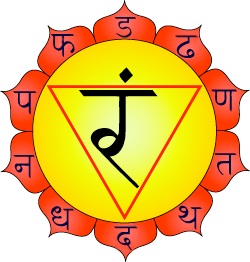
The solar plexus chakra, also known as the Manipura chakra, is the third energy centre in the body. It is located in the upper abdomen, below the rib cage, and is associated with personal power, self-confidence, willpower, and self-esteem. When the solar plexus chakra is balanced, you feel confident, motivated, assertive, and in control of your life. When it is imbalanced, you may experience low self-esteem, insecurity, fear, anger, or anxiety.
One way to balance the solar plexus chakra is to use a pendulum. A pendulum is a weighted object that swings back and forth from a string or chain. It can be used as a tool to access your intuition and subconscious mind. By asking yes or no questions, you can get guidance from your higher self or spirit guides.
To use a pendulum for balancing the solar plexus chakra, you will need a yellow or gold-coloured pendulum. Yellow is the colour of the solar plexus chakra and it helps to stimulate and activate it. You will also need a quiet and comfortable place where you can sit or lie down.
Here are the steps to follow:
- Hold the pendulum in your dominant hand and let it hang freely over your solar plexus chakra. Make sure the string or chain is not too long or too short. Ideally, it should be about 6 to 8 inches long.
- Relax your body and mind and focus on your breathing. Set an intention to balance your solar plexus chakra and ask for guidance from your higher self or spirit guides.
- Ask the pendulum to show you its yes and no signals. Usually, a clockwise motion means yes and a counter clockwise motion means no, but it may vary depending on your personal connection with the pendulum. You can also ask the pendulum to show you its maybe or unclear signals, which are usually diagonal or horizontal motions.
- Once you have established the signals, ask the pendulum if your solar plexus chakra is balanced. If it says yes, thank the pendulum and end the session. If it says no, proceed to the next step.
- Ask the pendulum what is causing the imbalance in your solar plexus chakra. You can ask specific questions such as “Is it related to my past experiences?”, “Is it related to my current situation?”, “Is it related to my emotions?”, etc. The pendulum will answer yes or no or maybe or unclear.
- Based on the answers, identify the root cause of the imbalance and ask the pendulum how you can heal it. You can ask for suggestions such as “Do I need to forgive someone?”, “Do I need to assert myself more?”, “Do I need to meditate more?”, etc. The pendulum will answer yes or no or maybe or unclear.
- Follow the guidance of the pendulum and act accordingly. For example, if the pendulum says you need to forgive someone, you can write a letter of forgiveness or say a forgiveness prayer. If the pendulum says you need to assert yourself more, you can practice speaking up for yourself or setting boundaries.
- After acting, ask the pendulum again if your solar plexus chakra is balanced. If it says yes, thank the pendulum and end the session. If it says no, repeat steps 5 to 8 until it says yes.
Using a pendulum for balancing the solar plexus chakra can help you gain more clarity, confidence, and empowerment in your life. It can also help you connect with your inner wisdom and guidance. Remember to always use the pendulum with respect and gratitude and trust your intuition.
Balancing the Heart Chakra with your Pendulum
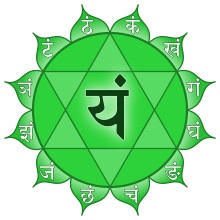
The heart chakra, or Anahata, is the fourth energy centre in the body, located in the centre of the chest. It is associated with love, compassion, forgiveness, and healing. When the heart chakra is balanced, you feel connected to yourself and others, and you experience joy and gratitude. When the heart chakra is imbalanced, you may feel lonely, isolated, resentful, or bitter.
One way to balance the heart chakra is to use a pendulum, which is a weighted object that swings back and forth from a string or chain. A pendulum can help you tune into your intuition and access your subconscious mind. By asking yes or no questions, you can determine the state of your heart chakra and what it needs to heal.
To use a pendulum for balancing the heart chakra, follow these steps:
- Find a quiet and comfortable place where you can sit or lie down. Hold the pendulum in your dominant hand and let it hang freely over your chest. Relax your breathing and clear your mind.
- Ask the pendulum to show you its signals for yes and no. Usually, a clockwise motion means yes, and a counter clockwise motion means no, but it may vary depending on your pendulum. Observe how the pendulum moves and remember its signals.
- Ask the pendulum if your heart chakra is balanced. If it says yes, thank the pendulum and end the session. If it says no, ask the pendulum what is causing the imbalance. You can ask questions such as: Is it related to a past trauma? Is it related to a current relationship? Is it related to a negative belief? Is it related to a physical issue? Keep asking until you get a clear answer.
- Once you identify the cause of the imbalance, ask the pendulum what you need to do to heal it. You can ask questions such as: Do I need to forgive someone? Do I need to express my feelings? Do I need to meditate? Do I need to seek professional help? Do I need to wear or carry a certain crystal? Keep asking until you get a clear answer.
- Follow the guidance of the pendulum and act to balance your heart chakra. You can also ask the pendulum to send healing energy to your heart chakra by swinging in a clockwise motion over your chest. Thank the pendulum for its assistance and end the session.
Balancing the Throat Chakra with your Pendulum
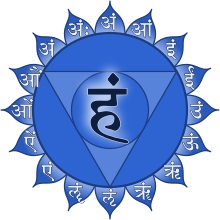
The throat chakra, also known as Vishuddha, is the fifth of the seven main energy centres in the body. It is located in the neck and throat area, and it governs communication, expression, creativity, and truth. When the throat chakra is balanced, you can speak your mind with clarity and confidence, listen to others with empathy and understanding, and express your authentic self with ease.
One way to balance the throat chakra is to use a pendulum, which is a weighted object that swings from a string or chain. A pendulum can help you access your subconscious mind and intuition, as well as clear any blockages or imbalances in your energy field.
Here are some steps to follow to balance your throat chakra with your pendulum:
- Choose a pendulum that resonates with you. You can use any material, shape, or colour, but some people prefer to use blue stones or crystals for the throat chakra, such as lapis lazuli, turquoise, or aquamarine.
- Cleanse your pendulum before using it. You can do this by holding it under running water, smudging it with sage or incense, or placing it on a bed of salt or in sunlight for a few hours.
- Find a comfortable and quiet place to sit or lie down. Hold your pendulum in your dominant hand, and let it hang freely over your chest. Relax your body and mind, and take a few deep breaths.
- Ask your pendulum to show you its signals for yes and no. You can do this by saying out loud or in your mind: “Show me yes” and “Show me no”. Observe how your pendulum moves. It may swing clockwise or counter clockwise, back and forth, or side to side. Remember these signals for future reference.
- Ask your pendulum if your throat chakra is balanced. You can do this by saying out loud or in your mind: “Is my throat chakra balanced?” Observe how your pendulum responds. If it shows you yes, then you are done. If it shows you no, then proceed to the next step.
- Ask your pendulum what is causing the imbalance in your throat chakra. You can do this by saying out loud or in your mind: “What is causing the imbalance in my throat chakra?” Observe how your pendulum responds. It may point to a specific direction, area of your body, or object in your environment. Alternatively, you may receive a word, image, or feeling in your mind that indicates the source of the imbalance.
- Ask your pendulum how to heal the imbalance in your throat chakra. You can do this by saying out loud or in your mind: “How can I heal the imbalance in my throat chakra?” Observe how your pendulum responds. It may point to a specific direction, area of your body, or object in your environment that you need to focus on, touch, or use. Alternatively, you may receive a word, image, or feeling in your mind that suggests an action, affirmation, mantra, or meditation that you need to do.
- Follow the guidance of your pendulum and do what it tells you to heal the imbalance in your throat chakra. You may need to repeat this step several times until you feel a shift in your energy or until your pendulum shows you yes when you ask if your throat chakra is balanced.
- Thank your pendulum for its assistance and cleanse it again after using it. You can also cleanse yourself by drinking water, taking a shower, or grounding yourself in nature.
Balancing the throat chakra with your pendulum can help you improve your communication skills, enhance your creativity, and express yourself more freely and honestly. Remember to trust yourself and your pendulum, and enjoy the process of healing and growth.
Balancing the Third Eye Chakra with your Pendulum

The third eye chakra, also known as the Ajna chakra, is located in the centre of the forehead and is associated with intuition, insight, and psychic abilities. When this chakra is balanced, you can access your inner wisdom and trust your intuition. However, when this chakra is blocked or imbalanced, you may experience confusion, doubt, fear, or detachment from reality.
One way to balance the third eye chakra is to use a pendulum, which is a weighted object that swings back and forth from a string or chain. A pendulum can help you tune into your subconscious mind and receive guidance from your higher self.
Here are some steps to use a pendulum to balance your third eye chakra:
- Choose a pendulum that resonates with you. You can use any pendulum that you like, but some crystals that are especially good for the third eye chakra are amethyst, lapis lazuli, sodalite, or clear quartz.
- Cleanse your pendulum before using it. You can do this by holding it under running water, smudging it with sage or incense, or placing it on a bed of salt or in the sunlight or moonlight for a few hours.
- Find a comfortable and quiet place to sit or lie down. Hold your pendulum in your dominant hand and let it hang freely over your third eye chakra. Relax your body and mind and focus on your breathing.
- Ask your pendulum to show you its signals for yes and no. You can do this by saying out loud or in your mind something like “Show me yes” and “Show me no”. Observe how your pendulum moves. It may swing clockwise or counter clockwise, side to side, or front to back. Remember these signals for future reference.
- Ask your pendulum if your third eye chakra is balanced. You can do this by saying out loud or in your mind something like “Is my third eye chakra balanced?” Observe how your pendulum moves. If it moves in the direction of yes, then your chakra is balanced. If it moves in the direction of no, then your chakra needs some work.
- If your chakra is imbalanced, ask your pendulum what you need to do to balance it. You can do this by saying out loud or in your mind something like “What do I need to do to balance my third eye chakra?” Observe how your pendulum moves. It may point to a specific direction, an object, a person, or a word. Follow your intuition and interpret the message from your pendulum.
- Thank your pendulum for its guidance and cleanse it again after using it. You can do this by repeating the same methods as before or by saying out loud or in your mind something like “Thank you for your help” and “Please be cleansed”.
Balancing the Crown Chakra with your Pendulum
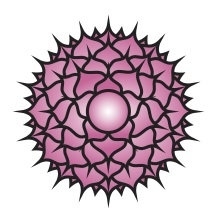
The crown chakra, also known as Sahasrara, is the seventh and highest of the seven main chakras. It is located at the top of the head and is associated with spiritual awareness, enlightenment, and connection to the divine. The crown chakra is often depicted as a thousand-petaled lotus flower that radiates pure white or violet light.
One of the ways to balance the crown chakra is to use a pendulum, which is a weighted object suspended from a string or chain that can swing freely. A pendulum can be used to detect and clear any blockages or imbalances in the energy flow of the chakras.
To use a pendulum for the crown chakra, follow these steps:
- Find a quiet and comfortable place where you can sit or lie down and relax. You can also play some soothing music or light some incense to create a peaceful atmosphere.
- Hold the pendulum in your dominant hand and let it hang over your chest. Ask it to show you its movement for yes and no. For example, it may swing clockwise for yes and counter clockwise for no, or vice versa. Make sure you establish a clear communication with your pendulum before proceeding.
- Move the pendulum over your crown chakra, which is about an inch above the top of your head. Ask it if your crown chakra is balanced. If it says yes, you can move on to the next chakra. If it says no, you need to work on clearing and balancing your crown chakra.
- To clear your crown chakra, ask your pendulum to show you the direction of the energy flow of your crown chakra. It may swing in a circular motion, either clockwise or counter clockwise. If it swings clockwise, it means that your crown chakra is spinning too fast and you need to slow it down. If it swings counter clockwise, it means that your crown chakra is spinning too slow and you need to speed it up.
- To balance your crown chakra, ask your pendulum to swing in the opposite direction of the energy flow of your crown chakra. For example, if your pendulum swings clockwise, ask it to swing counter clockwise, and vice versa. This will help to restore the harmony and equilibrium of your crown chakra.
- Keep doing this until your pendulum stops swinging or changes its direction to match the energy flow of your crown chakra. This means that your crown chakra is balanced and cleared.
- Thank your pendulum for its assistance and gently put it away. You can also thank yourself for taking the time to heal and balance your crown chakra.
- You may feel some sensations in your head, such as tingling, warmth, or lightness. You may also experience some changes in your mood, thoughts, or perception. These are signs that your crown chakra is activated and aligned with your higher self and the divine source.
Conclusion and final thoughts on Chakra Balancing with a Pendulum
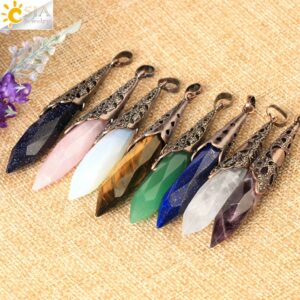
Chakra balancing with a pendulum is a simple and effective way to harmonize your energy centres and promote well-being. By using a pendulum, you can access your intuition and detect any imbalances in your chakras. You can then use the pendulum to clear, heal, and balance your chakras, restoring your natural flow of energy.
Chakra balancing with a pendulum can be done by yourself or with the help of a practitioner. You can use any pendulum that resonates with you, or choose one that corresponds to the chakra you want to work on. You can also use different techniques, such as asking questions, spinning the pendulum, or placing it over the chakra.
Chakra balancing with a pendulum can have many benefits, such as enhancing your physical, mental, emotional, and spiritual health. It can also help you to release negative emotions, increase your awareness, and connect with your higher self. Chakra balancing with a pendulum is a powerful tool for self-care and personal growth.
However, chakra balancing with a pendulum is not a substitute for medical or professional advice. If you have any health issues or concerns, you should consult a qualified doctor or therapist. You should also be careful not to overdo it or become dependent on the pendulum. Remember that you are the ultimate authority on your own energy and well-being.
